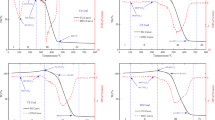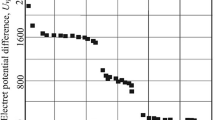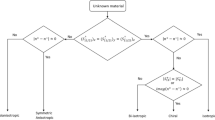Abstract
THE polarization of the light reflected from coal surfaces has been examined by use of the same apparatus which served for an examination of the intensity of the light reflected at different angles of incidence1. As the photocell used had a response spreading from 4500 A. to 10000 A. with a maximum at 7500 A., a water cell was used to absorb the unwanted infra-red radiation. A No. 70 Wratten Monochromat filter was placed in front of the source, and an analysing Nicol prism before the photocell unit.
This is a preview of subscription content, access via your institution
Access options
Subscribe to this journal
Receive 51 print issues and online access
$199.00 per year
only $3.90 per issue
Buy this article
- Purchase on Springer Link
- Instant access to full article PDF
Prices may be subject to local taxes which are calculated during checkout
Similar content being viewed by others
References
Cannon and George, NATURE, 150, 690 (1942).
Fisher, Amer. Min., 19, 133 (1934).
McCabe, Fuel, 16, 309 (1937).
Author information
Authors and Affiliations
Rights and permissions
About this article
Cite this article
CANNON, C., GEORGE, W. Refractive Index of Coals. Nature 151, 53–54 (1943). https://doi.org/10.1038/151053a0
Issue Date:
DOI: https://doi.org/10.1038/151053a0
Comments
By submitting a comment you agree to abide by our Terms and Community Guidelines. If you find something abusive or that does not comply with our terms or guidelines please flag it as inappropriate.



